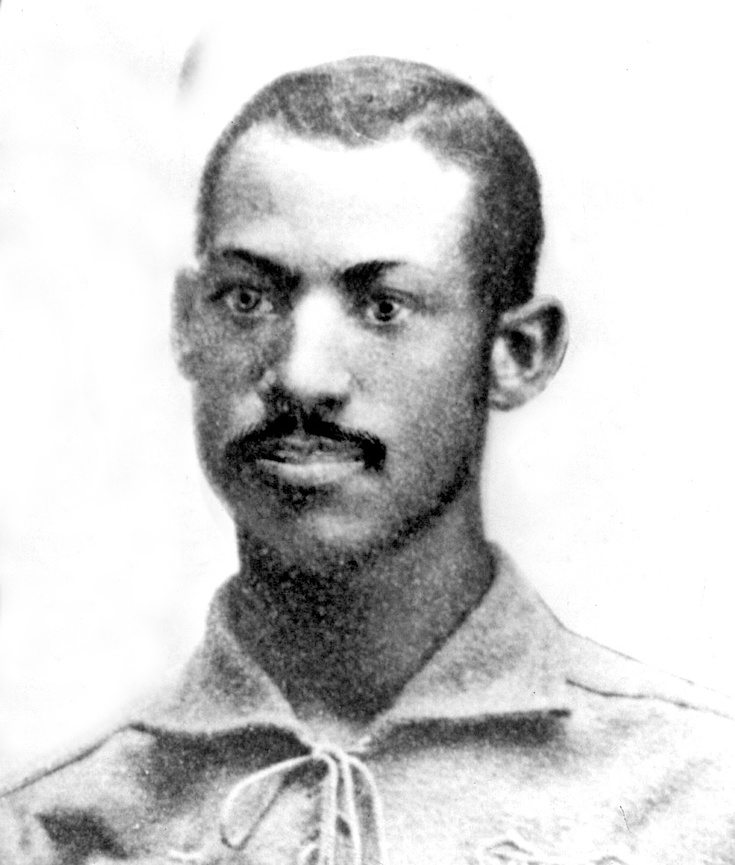[dropcap]Mark[/dropcap] Palmer wanders through a cemetery in a southeastern Ohio steel town looking for a man most of the world has forgotten.
Years ago, Palmer’s grandmother told him the story of the man buried here. That’s my uncle, she said, your great-grand uncle. His name was Moses Fleetwood Walker, and he was the first black baseball player in the major leagues. [mc4wp_form id=”6042″]
Palmer occasionally mentioned this to his boyhood friends.
“Jackie Robinson was the first,” they replied. “Everyone knows that.”
So Palmer let it be.
Now, at Union Cemetery, Palmer meanders the grounds, wracking his brain. He can’t find the grave site.
On the gentle sloping hills, it is cool and shady and it smells of fresh-cut grass. The chirps of crickets fill the thick air.
Palmer thinks the grave is close to the road, or perhaps near the mausoleum, so he checks there first.
At least the grave is marked now. Walker died in 1924 and it wasn’t until 1990 that the Oberlin Heisman Club planted a headstone to commemorate its student from long ago. Palmer and a few others attended the ceremony.

NATIONAL MUSEUM OF AFRICAN AMERICAN HISTORY & CULTURE | WASHINGTON, DC
The National Museum of African American History and Culture is the only national museum devoted exclusively to the documentation of African American life, history, and culture. It was established by Act of Congress in 2003, following decades of efforts to promote and highlight the contributions of African Americans. To date, the Museum has collected more than 36,000 artifacts and nearly 100,000 individuals have become charter members. The Museum opened to the public on September 24, 2016, as the 19th and newest museum of the Smithsonian Institution. (Website).


You must be logged in to post a comment.